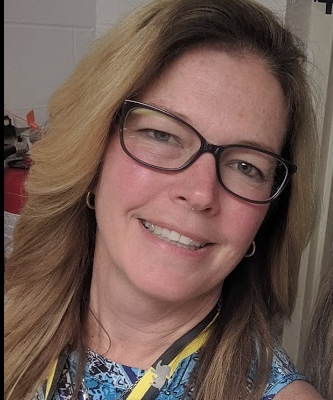 The 2019-2020 school year started off excitedly in the GWMS STEAM Lab. Earlier in the spring, I had received word that my MassCUE Classroom Grant was chosen and my dream of integrating Nintendo into the STEAM Lab began to come to life.
The 2019-2020 school year started off excitedly in the GWMS STEAM Lab. Earlier in the spring, I had received word that my MassCUE Classroom Grant was chosen and my dream of integrating Nintendo into the STEAM Lab began to come to life.
Nintendo first released the Labo program in the Spring of 2018. The games come with large sheets of cardboard that are built into “Toy-Cons.” Through movement and manipulation, students are able to control the video game on the Nintendo Switch. Since 2018, Nintendo has released the Variety Kit, Robot Kit, Vehicle Kit, and VR Kit. Each kit includes the cardboard sheets, game card, and unlimited hours of fun.
The Growing World of Gaming
The gaming world continues to grow rapidly for children and adults. Esports gaming teams compete just like professional athletic teams and are therefore inspiring schools to add gaming programs. Many high schools are beginning to offer Esports classes and clubs. Colleges and universities around the world are offering scholarships to Esports players. In Massachusetts, the Esports community is quickly expanding and teams compete against each other in leagues. My dream was to integrate video gaming and making into my classroom, the STEAM Lab. Nintendo Labo is a perfect solution to provide younger students with an academic opportunity to explore gaming.
Game-Based Learning
As an upper elementary/middle school teacher (grades 3-6), I have so many students who absolutely love to play  video games. But I also have parents who worry about screen time, the negative effects of video games, and whether or not their children get anything out of gaming.
video games. But I also have parents who worry about screen time, the negative effects of video games, and whether or not their children get anything out of gaming.
When starting the Nintendo Labo program at my school, one of my goals was to help change the dialogue to inform students and parents of the positives of gaming. In the STEAM Lab, students constantly are building, creating, problem-solving, collaborating and working in teams. This stayed true for the Nintendo Labo program as well. Students were expected to work in groups to build the Labos, problem-solve, and explore the game. Each grade level focused on a different topic and each grade used the engineering design process to help build.
This year the Nintendo Labo program had its ups and downs. I realized that 5 class periods of about 45 minutes of actual building time, wasn’t enough for some of the more intensive Labos to be completed. To help fix this, I began making sure some kits had some premade components. I also realized that some tiny pieces of cardboard can be lost in the shuffle. Luckily, the Labo pieces can easily be replaced using a new piece of cardboard and an X-Acto knife. I also realized that the Nintendo Labo programs have so much more to offer than just building and playing. There is a secret section called “Toy-Con Garage” in which players can create their own games and “Toy-Cons.” It’s basically like an open lab for students to program and code. In realizing this, my mind began to swim with ideas for next year’s Labo curriculum. Nintendo Labo also released an awesome teacher guide to help teachers implement Labo programming.
New Excitement and Challenges
 The STEAM Lab’s first year carrying out the Nintendo Labo program was incredible. Students enthusiastically ran to their stations to get to work. Students problem-solved together, decided on jobs that would enable their groups to successfully build the Toy-Con, and loved playing with the finished Toy-Cons. Did we have several kinks in the road? Absolutely. Did I expect to have them? Definitely. Is next year going to be even better? You bet. That’s one of the best parts of teaching in the STEAM Lab. Each year brings new excitement and challenges… and many ideas for the future.
The STEAM Lab’s first year carrying out the Nintendo Labo program was incredible. Students enthusiastically ran to their stations to get to work. Students problem-solved together, decided on jobs that would enable their groups to successfully build the Toy-Con, and loved playing with the finished Toy-Cons. Did we have several kinks in the road? Absolutely. Did I expect to have them? Definitely. Is next year going to be even better? You bet. That’s one of the best parts of teaching in the STEAM Lab. Each year brings new excitement and challenges… and many ideas for the future.
I would like to give a special thank you to MassCUE for awarding my classroom with the MassCUE Classroom Grant. My students were so appreciative of the Labo Program and are actively looking forward to what’s next in the curriculum. There is no better feeling than having students run off the bus asking if it is their turn in the STEAM Lab. Most importantly, thank you for your support and for believing in my classroom.
Tori Cameron is a STEAM Teacher at Gordon W. Mitchell School in East Bridgewater, MA. She also hosts the STEAM Up the Classroom Podcast which can be found on SoundClound and Apple Podcasts. Tori’s favorite video game is Zelda, Breath of the Wild. Reach out to Tori on Twitter @steamuptheclsrm, see Tori’s classroom in action on Instagram @steamuptheclassroom, or check out her website steamuptheclassroom.com.
 Print this post
Print this post



